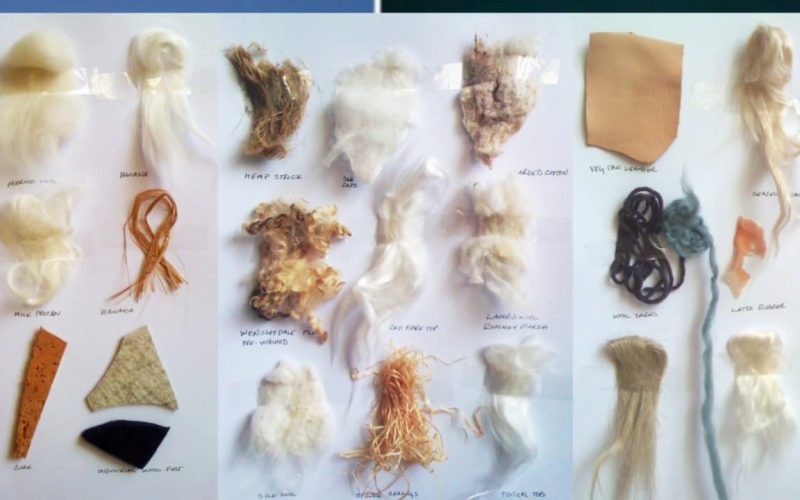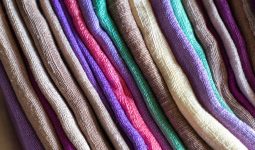The different types of fibers are classified based on their origin; fibers from a natural source are called natural fibers, and artificial fibers are called synthetic fibers.
Fibers from plants or Animals are Natural fibers. Examples of such fibers are Cotton, Wool, Jute, and Silk.
Synthetic fibers, on the other hand, are artificial from chemical substances. Examples include Nylon, Rayon, and Polyester.
Fibers are threadlike structures or long, thin, and flexible filaments. Furthermore, they use them for different purposes.
Fibers are essential materials in the textile industry. Textiles are naturally so important in our daily lives that we can’t do without them.
Knowing that we can not live without textiles, we should discuss the basics and importance of fibers.
Furthermore, textile fibers are important for covering, warmth, personal adornment, and even displaying personal wealth.
Follow me to learn more about the kinds of different fibers available based on their Classification.
Classification of Fiber
We classify fiber into two categories based on its origin.
Natural Fibers
Natural fibers are fibers obtained from Plants, Animals, or Minerals. They are classified as Plant, Animal, and Mineral Fibers. Natural fibers include Cotton, Jute, wool, silk, and many others.
Plant Natural Fibers
Plant fibers are types of fibers obtained from plants. These fibers extracted from plants can either be Bast Fiber, Leaf Fiber, or Seed Fiber.
Examples of Bast fibers are Flax, Hemp, Jute, and Ramie; examples of Leaf fibers are Manila, Sisal, Pina, an example of seed fiber is cotton.
Furthermore, most of these fiber extractions are from plants to make fabrics. Below are some examples of natural fibers.
Cotton
Cotton is a natural fiber most widely used for making apparel. A single thread is an elongated cell with a flat, twisted, ribbon-like structure. It is like a boll around the seeds of cotton.
Furthermore, cotton grows in black soil and a warm climate. The cotton plant has a boll, which has seeds inside surrounded by cotton fibers.
When this cotton boll matures, it splits open, exposing the raw cotton fiber inside. The threads will get dried by the sun and ready for harvest.
The harvested cotton goes for ginning separates the fibers and the seed. Furthermore, the fibers will be clean and made into long threadlike strands.
Furthermore, cotton has the following characteristics: it has very little elasticity and comfortability, conducts heat well, gets weakened by extended sunlight exposure, and has a relatively fair to good strength.
Linen
Linen is one of the different types of fibers. They are expensive natural fibers. Linens production is in small quantities because it is labor-intensive. Furthermore, linen fiber comprises 70% and 30% cellulose and pectin.
In addition, Linen is characterized by its poor elasticity, a good conductor of electricity, Lustrousness, high absorbency, and brittleness. It is also the strongest vegetable fiber.
In conclusion, Linen is used to make Apparel—suits, dresses, shirts, skirts, etc.; it is suitable for home and commercial furnishing.
Jute
Jute is one of the different types of soft, shiny, spun into coarse, strong threads. They are fibers obtained from the bark of the plant Jute.
Furthermore, Jute can grow on different soil types, from sandy to clay. This plant grows best on loamy, sandy, and clay soil, and it generally loves growing in a region with so much rain.
It is also worth noting that Jute is the cheapest fiber in significant quantities. Furthermore, jute is known for its low strength, ability to be bleached, and disadvantage of not being durable. They deteriorate fast when exposed to moisture.
Kapok
Kapok is one of the different types of fibers. This fiber is from the seed capsules of plants and trees of Ceiba Pentandra indigenous to Indonesia, Mexico, Central America, Northern South America, and the Caribbean.
Furthermore, Kapok’s characteristics are its smooth texture, lustrousness, fragility, and moisture resistance. Kapok is used to make mattresses, cushions, and upholstery.
Hemp
Hemp is one of the different types of fiber obtained from the stem of the hemp plant. It is also used to make ropes, clothes, carpets, and paper.
Coir
Coir is a type of fiber obtained from the coconut’s outer covering or husk. It is Obtained by leaving the coconut in water for a few months.
Furthermore, the Coir application makes household products like floor covering and ropes.
Ramie
Ramie is one of the different types of fibers that are not so common. This type of fiber is a woody fiber resembling flax taken from the flowering plant.
Furthermore, Ramie is characteristic in its stiffness, brittleness, and lustrous. In addition, it is also suitable for making canvas upholstery and clothing.
Animal Natural Fibers
Animal fibers are natural fibers obtained from animals. Examples of Animal fibers are wool and silk.
Silk
Silk is one of the different types of fibers. They are a fine, continuous strand unwound from the cocoon of a moth caterpillar known as the silkworm.
This is a plant fiber standard for stuffing in pillows, sleeping bags, and life jackets. Furthermore, silks shine a lot.
In addition, silk is distinguished by its Lustrous, smooth, and slippery soft texture. It is also lightweight.
However, silk is at a disadvantage because its elasticity is poor and easily weakened when exposed to too much sunlight.
Wool
Wool is one of the different natural fibers from sheep, goats, and camels. This type of fiber is a relatively coarse and crimped fiber.
Furthermore, the thread’s appearance depends on the material’s variety. The smoother the scales, the finer, softer, and warmer the fiber.
This type of fiber is characterized by its crimped appearance, elasticity, resistance to static electricity, and ability to trap air, which makes it a lousy conductor of heat. Wool cloth is usually valuable for winter.
They are suitable for making clothing, such as Jackets, suits, trousers, sweaters, and hats. This fiber is also ideal for making blankets, carpets, rugs, and upholstery.
Man-made Fibers
Synthetic fibers are one of the different artificial polymers that make fabric. These fibers are further classified into Cellulosic, Non-Cellulosic, Protein, Rubber, Metallic Fibers, and Mineral Fibers.
Cellulosic Fibers
Cellulosic fiber is one of the different fiber types from the cellulose of a cell. Three types of cellulosic fibers exist: Rayon, Acetate, and Triacetate.
- Rayon: Rayon is one of the fibers that are different from naturally occurring polymers that simulate natural cellulosic fibers. Furthermore, their characteristics are their softness, smoothness, and comfortability; they are also naturally high in luster and absorb heat. In conclusion, this Rayon is suitable for making apparel, furnishing items, and industrial use.
- Acetate: Acetate is an acetylated cellulose, they are the cellulose salt. Their characteristics are thermoplastic ability, softness, smoothness, and resilience. Furthermore, they are primarily use in making apparel like blouses, dresses, jackets, lingerie, linings, suits etc.In addition, they are also used in making fabrics like satins, brocades, etc
- Tri-acetate: This is a type of cellulosic fiber that produces triacetate cellulose from acetylated cellulose. Furthermore, their characteristics are their thermoplastic ability and resilience, and they are easily washable. In addition, this is suitable for the making of apparel.
Non- Cellulosic Fibers
Non-cellulosic fiber is a synthetic fiber consisting of Polymer fibers, Nylon, Polyester, Acrylic, and many others.
- Polymer Fibers: This is a type of non-cellulosic fiber from various combination of large molecules to make linear polymers.
- Nylon: This is a type of fiber forming substances. There are several forms of nylon. The several types of nylon depends on the chemical synthesis. Furthermore, nylon is a very polpular type of fabrics that there characteristic is by high resistivity and elasticity, they are also very strong and durable. In addition, they are use in the application of Apparel like stockings and leggings, they are also use for home furnishing and industrial applications to make parachutes, ropes, airbags etc.
- Polyester:Polyesters characteristics is by their thermoplastic ability and good strength. Polyester is suitable in making Apparel such as woven, shirts, pants and jackets. Polyesters are also use for house furnishing, making of bedsheets, blankets and other house furnitures. They are also use for industrial purpose such as safety belts.
- Acrylic: Acrylic is a type of cellulosic fibers. there characteristics is by their softness, warm handling characteristics, resilient and shape retentive. Furthermore, polyester is suitable in making Apparel and home furnishing.
Protein Fibers
Protein fibers are one of the different threads made from protein products such as corn and milk that will be processed chemically and converted into fibers. However, this type of fiber is not common, and it is not commercially successful.
Rubber Fibers
Rubber fibers are one of the different fibers comprising natural and synthetic rubber. This type of fiber is relatively smooth.
Metallic Fibers
This type of fiber is metal, metal-coated plastic, or a core completely covered by metal.
Mineral Fibers
Mineral fiber is produced from minerals manufactured into glass, ceramic, and graphite fibers, having prescribed properties for specific uses.
These articles have gone a long way in describing the different types of fibers we have, and I believe reading through these articles, you will have basic knowledge of what threads are, what makes the fabrics, and the types of fibers that all these elements form part of our lives.








